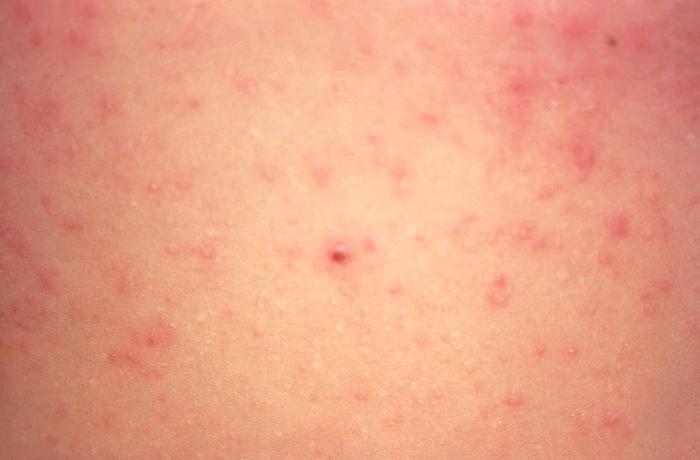Berkeley health officials announced Monday that a UC Berkeley student has been diagnosed with measles, prompting them to encourage Berkeley community members to make sure they and their children are vaccinated against the highly communicable viral disease.

The dates of exposure to the community were from August 24 through August 29, when the student was put in isolation. The student’s activities during the early days of the infectious period-before the tell-tale rash developed-included spending time on the UC campus and in the community. On Monday August 24, the student left the campus area on AC Transit bus 25-A at 3:30 p.m. and returned on the same bus line at 5:30 p.m.. The measles virus can linger in the air for up to two hours, so Berkeley community members may have been exposed in a wide variety of places.
City of Berkeley Public Health is working with UC Berkeley to notify and assess exposed individuals who shared living quarters or classes with the ill student, who is now in isolation. Berkeley Public Health is also working closely with the California Department of Public Health and other public health officials to get information out to those who may have been exposed, and to health care providers.
Measles is a highly infectious, airborne virus, which spreads rapidly. Symptoms can develop between 7 and 21 days after exposure to the virus. The risk is very slight for those who have received the recommended two doses of the MMR vaccine.
If those exposed develop fever and a facial rash, they should contact their health care provider for advice and assistance. Those at highest risk are those who are unvaccinated, infants, pregnant women, and those with impaired immunity.
Measles is highly preventable. The recommended two doses of MMR vaccine protects 99% of people even if they are exposed to the virus. Even a single dose protects 95% of those vaccinated.
Measles can have significant health impacts, especially among infants and pregnant women. Patients develop high fevers, red and watery eyes, high fevers, and a rash that starts on the head and face and spreads to cover most of the body. In some cases, measles can lead to pneumonia, encephalitis, hospitalization or even death.


2 thoughts on “Measles confirmed in UC Berkeley student, community encouraged to vaccinate”